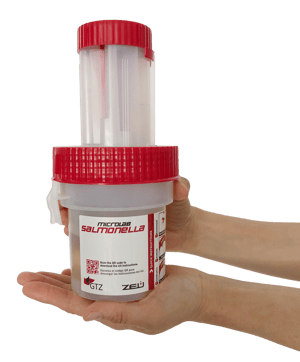The new MicroLab device can detect the presence of Salmonella or Listeria in food samples in a simple and safe manner. The new system integrates all the assay steps into a single disposable device. It facilitates and speeds up the results while minimizing production losses in case of contamination.

Listeria and salmonella are two of the main concerns of the food safety sector. During the period of 2014-2017 there were 1,139 outbreaks of food salmonellosis in Spain and more than 1800 cases of infection in the EU by listeria were reported.
In order to manage and improve self-inspection, the company Zeulab is launching onto the market “an analysis device, all in one, which will allow food businesses to autonomously self-inspect without risk of contamination in a simple and reliable way,” notes CEO Dr. Pedro Razquin Zeulab. MicroLab has two product lines, one for detecting Salmonella and one for Listeria monocytogenes.
Microlab integrates the three phases of the analysis onto one device (enrichment, detection and inactivation). The process is performed as follows: the device is hermetically closed after introducing the sample, preventing any risk of contamination in the presence of positive samples. Once the enrichment stage has passed, 24 hours or 48 hours for Salmonella Listeria, the result is obtained in 15 minutes in a visually and easily interpretable manner. Once the text is complete, the device may be inactivated so that it can be disposed of in a safe way.
The advantages of this new device include the ability to reduce/eliminate the risk and perform a first check for both those products that due to having a short life need fast results and companies that do not have their own laboratory and need fast results that enable them to start the transformation process of the product. It permits the application of the device on a wide variety of meat, dairy, egg and smoked products. Safety and risk of contamination are key elements in the reputation of food brands.
Thanks to its simplicity and safety, food businesses will have a new safety system incorporated in their work processes, allowing them to analyze themselves without the need for an internal laboratory, an extra step in food safety.

